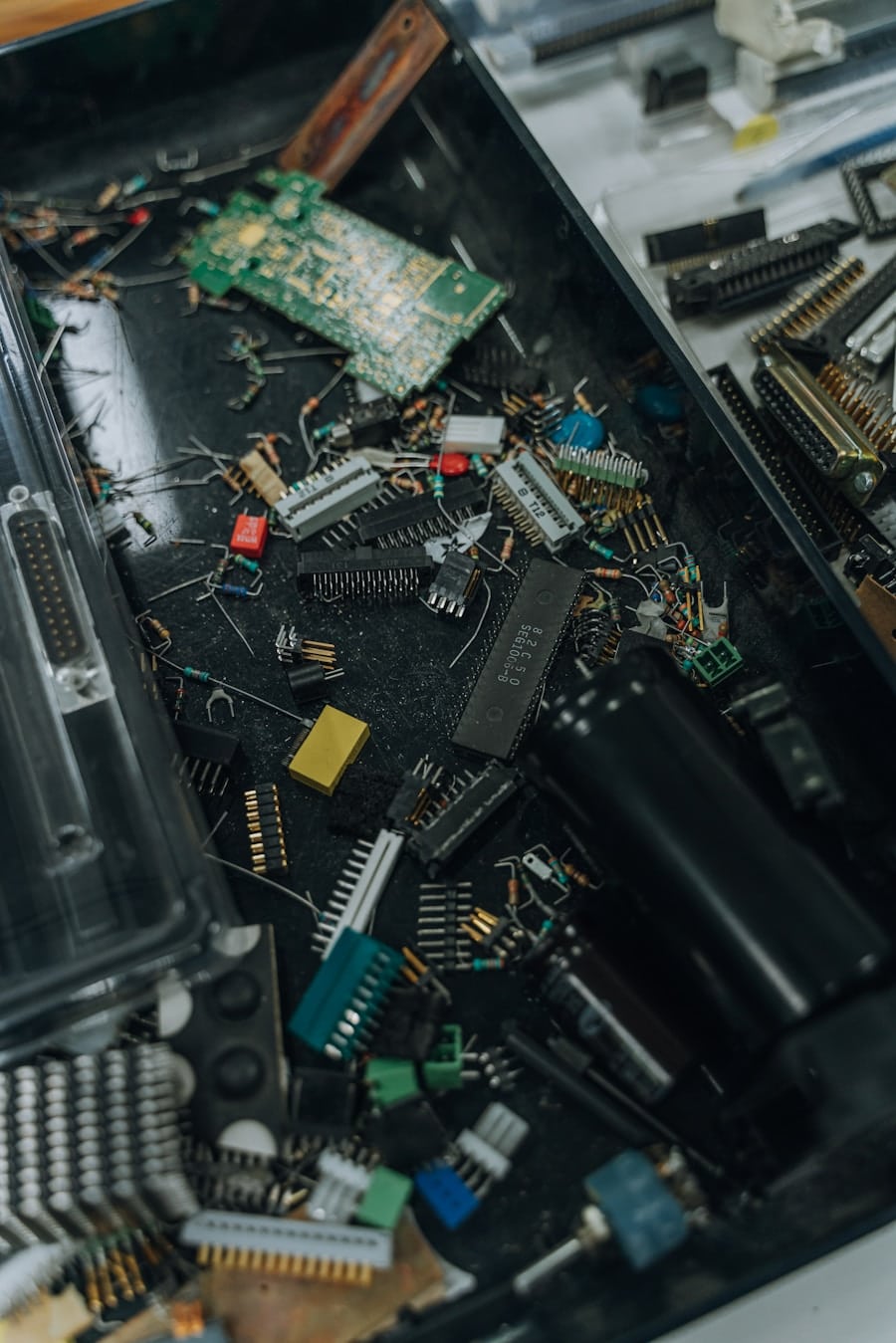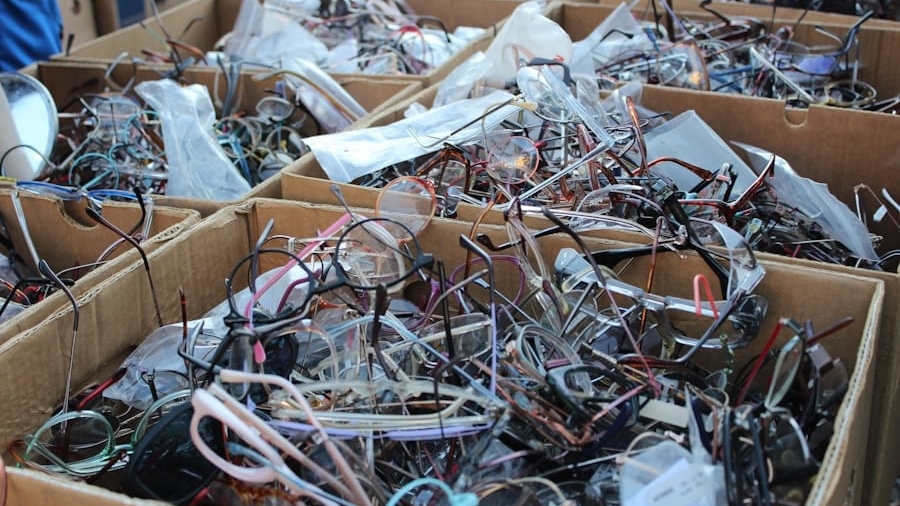In recent years, the tech industry has witnessed a significant shift towards sustainability, with biodegradable tech devices emerging as a promising solution to the growing e-waste crisis. As consumer awareness of environmental issues increases, manufacturers are under pressure to innovate and create products that minimize their ecological footprint. This has led to the development of devices made from materials that can decompose naturally, reducing the burden on landfills and the environment.
Companies are now exploring various biodegradable materials, such as bioplastics derived from renewable resources, to create smartphones, laptops, and other electronic gadgets that can break down safely after their useful life. The rise of biodegradable tech devices is not merely a trend; it reflects a broader societal movement towards sustainability. As governments and organizations implement stricter regulations on waste management and environmental protection, the tech industry is responding by investing in research and development of eco-friendly alternatives.
For instance, some startups are focusing on creating fully biodegradable circuit boards and casings that can decompose within a few months to a few years, depending on the material used. This innovation is crucial in addressing the staggering statistics surrounding e-waste, which is projected to reach 74 million metric tons globally by 2030, according to the Global E-Waste Monitor.
Key Takeaways
- Biodegradable tech devices are on the rise, offering a sustainable alternative to traditional electronic devices.
- Advantages of biodegradable tech devices include reducing e-waste and minimizing environmental impact.
- Challenges and limitations of biodegradable tech devices include durability and cost-effectiveness.
- Biodegradable tech devices have a positive environmental impact, reducing the amount of non-biodegradable waste.
- Biodegradable tech devices play a crucial role in sustainable electronics, promoting a circular economy and reducing resource consumption.
Advantages of Biodegradable Tech Devices in E-Waste Management
One of the most significant advantages of biodegradable tech devices is their potential to alleviate the e-waste crisis. Traditional electronic devices often contain hazardous materials such as lead, mercury, and cadmium, which can leach into the environment when disposed of improperly. In contrast, biodegradable devices are designed to break down into non-toxic components, significantly reducing the risk of soil and water contamination.
This characteristic not only benefits the environment but also aligns with global efforts to promote responsible waste management practices. Moreover, biodegradable tech devices can contribute to a circular economy by encouraging recycling and composting initiatives. When these devices reach the end of their life cycle, they can be processed in ways that allow for their materials to be reused or returned to the earth.
This contrasts sharply with conventional electronics, which often end up in landfills or incinerators. By integrating biodegradable materials into tech products, manufacturers can foster a more sustainable lifecycle for their devices, ultimately leading to reduced resource extraction and energy consumption associated with traditional manufacturing processes.
Challenges and Limitations of Biodegradable Tech Devices

Despite their promising advantages, biodegradable tech devices face several challenges and limitations that hinder widespread adoption. One major concern is the performance and durability of biodegradable materials compared to conventional plastics and metals. Many biodegradable options may not withstand the same level of wear and tear as traditional materials, leading to concerns about device longevity and reliability.
Another significant challenge is the cost associated with producing biodegradable tech devices. The research and development phase for new materials can be expensive, and these costs are often passed on to consumers.
As a result, biodegradable devices may be priced higher than their non-biodegradable counterparts, making them less accessible to a broader audience. Additionally, there is still a lack of infrastructure for composting or recycling biodegradable electronics in many regions, which can limit their effectiveness in reducing e-waste if consumers do not have proper disposal options available.
The Environmental Impact of Biodegradable Tech Devices
The environmental impact of biodegradable tech devices extends beyond their ability to decompose safely. The production process for these devices often utilizes renewable resources, such as plant-based materials, which can significantly reduce greenhouse gas emissions compared to fossil fuel-derived plastics. For example, bioplastics made from corn starch or sugarcane can have a lower carbon footprint during production than traditional petroleum-based plastics.
This shift not only helps mitigate climate change but also promotes sustainable agricultural practices by creating demand for crops that can be used in manufacturing. Furthermore, biodegradable tech devices can play a role in reducing the overall volume of e-waste generated each year. By designing products that are easier to recycle or compost, manufacturers can help divert electronic waste from landfills and incinerators.
This is particularly important given that e-waste is one of the fastest-growing waste streams globally. The environmental benefits of reducing e-waste extend beyond just minimizing landfill use; they also include conserving natural resources and reducing pollution associated with mining and manufacturing new materials.
The Role of Biodegradable Tech Devices in Sustainable Electronics
Biodegradable tech devices represent a critical component of the broader movement towards sustainable electronics. As consumers become more environmentally conscious, they are increasingly seeking products that align with their values. This shift in consumer behavior is prompting manufacturers to prioritize sustainability in their design processes.
Biodegradable devices not only meet this demand but also serve as a tangible example of how technology can evolve to address pressing environmental challenges. In addition to appealing to eco-conscious consumers, biodegradable tech devices can also enhance brand reputation for companies committed to sustainability. By investing in green technologies and promoting biodegradable products, companies can differentiate themselves in a competitive market.
This commitment to sustainability can lead to increased customer loyalty and attract new customers who prioritize environmental responsibility in their purchasing decisions.
Innovations in Biodegradable Materials for Tech Devices

Natural Sources for Biodegradable Materials
For instance, PLA is already being used in 3D printing applications and has shown promise for creating lightweight casings for smartphones and tablets.
Innovative Integration
Another exciting area of innovation involves integrating biodegradable materials with electronic components. For example, researchers are developing conductive inks made from organic materials that can be printed onto biodegradable substrates.
Revolutionizing Electronics
This technology allows for the creation of fully functional electronic circuits that do not rely on traditional metals or plastics. Such advancements could revolutionize how we think about electronics by enabling entirely compostable devices without sacrificing functionality or performance.
The Future of Biodegradable Tech Devices in E-Waste Management
Looking ahead, the future of biodegradable tech devices appears promising as both technology and consumer preferences evolve. As research continues to advance in material science and engineering, we can expect to see more robust and affordable biodegradable options entering the market. This could lead to widespread adoption across various sectors, including consumer electronics, medical devices, and even automotive applications.
The integration of biodegradable materials into mainstream products could significantly reduce e-waste generation and promote more sustainable consumption patterns. Moreover, regulatory frameworks are likely to play a crucial role in shaping the future landscape of biodegradable tech devices. Governments around the world are increasingly recognizing the need for sustainable practices in electronics manufacturing and waste management.
Policies that incentivize the use of biodegradable materials or impose stricter regulations on e-waste disposal could accelerate the transition towards greener technologies. As these changes take place, consumers will likely find themselves with more options for eco-friendly devices that align with their values.
How Consumers Can Support Biodegradable Tech Devices
Consumers play a vital role in driving the demand for biodegradable tech devices through their purchasing choices and advocacy efforts. By opting for products made from sustainable materials, consumers can signal to manufacturers that there is a market for eco-friendly alternatives. This demand encourages companies to invest in research and development of biodegradable technologies and expand their product lines accordingly.
Additionally, consumers can support initiatives aimed at improving recycling infrastructure for biodegradable electronics. Engaging with local governments or organizations focused on waste management can help raise awareness about the importance of proper disposal methods for these products. By participating in community programs or advocating for better recycling options, consumers can contribute to creating an environment where biodegradable tech devices can thrive and fulfill their potential in reducing e-waste.
In conclusion, as we navigate an increasingly digital world marked by rapid technological advancements, embracing biodegradable tech devices offers a pathway toward a more sustainable future. Through innovation in materials science and a collective commitment from consumers and manufacturers alike, we can work towards mitigating the environmental impact of electronic waste while fostering a culture of sustainability within the tech industry.
In a related article, Discover the Best Free Software for Home Remodeling Today, explores how technology is revolutionizing the way we approach home improvement projects. Just like how biodegradable tech devices are changing e-waste management, this article highlights the innovative tools and software available to homeowners looking to renovate their spaces efficiently and sustainably. By embracing these advancements, individuals can not only reduce waste but also enhance the overall quality of their living environment.
FAQs
What are biodegradable tech devices?
Biodegradable tech devices are electronic devices that are designed to break down and decompose naturally over time, reducing the environmental impact of electronic waste.
How do biodegradable tech devices help with e-waste management?
Biodegradable tech devices help with e-waste management by reducing the amount of electronic waste that ends up in landfills. These devices break down naturally, reducing the environmental impact of electronic waste.
What are the benefits of using biodegradable tech devices?
The benefits of using biodegradable tech devices include reducing the environmental impact of electronic waste, minimizing the accumulation of non-biodegradable materials in landfills, and promoting sustainable and eco-friendly technology.
Are biodegradable tech devices as durable as traditional electronic devices?
Biodegradable tech devices are designed to be as durable and functional as traditional electronic devices. Manufacturers ensure that these devices meet the same performance standards while also being environmentally friendly.
How can consumers dispose of biodegradable tech devices?
Consumers can dispose of biodegradable tech devices by following the manufacturer’s instructions for proper disposal. This may include recycling programs or specific disposal methods to ensure the devices break down in an environmentally friendly manner.

